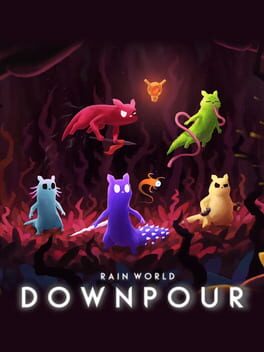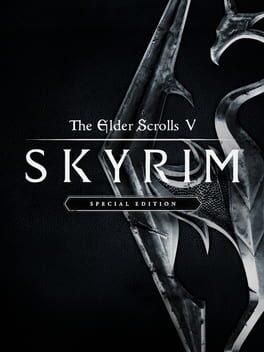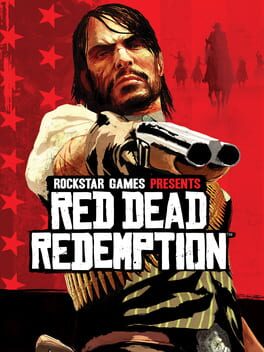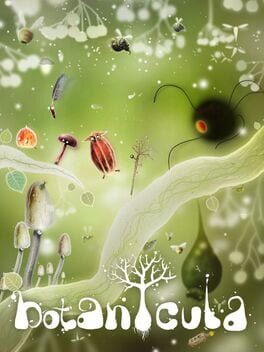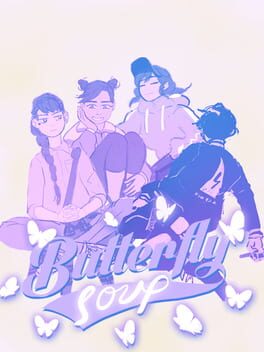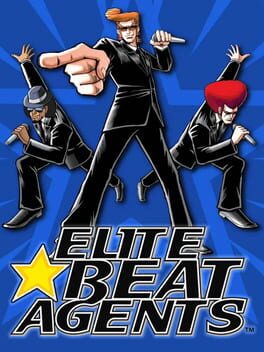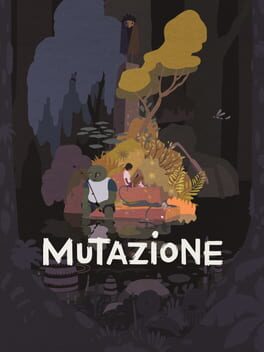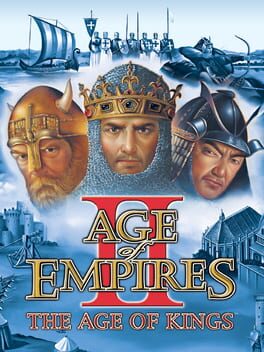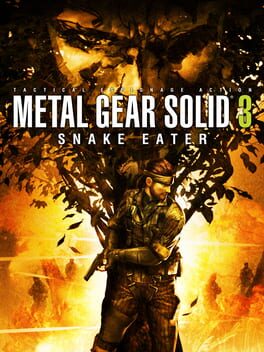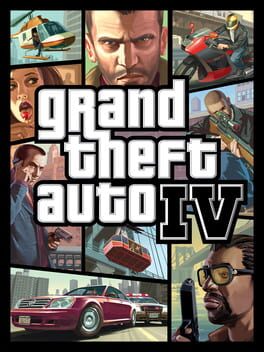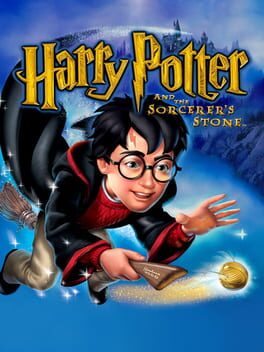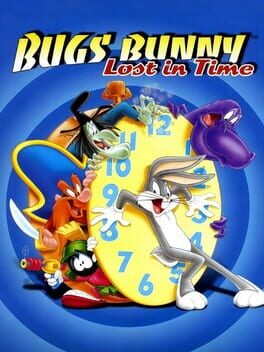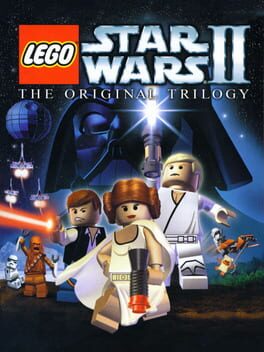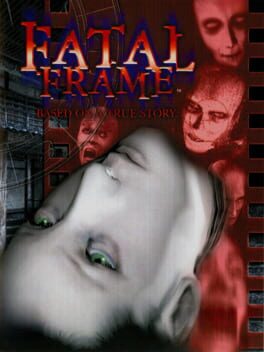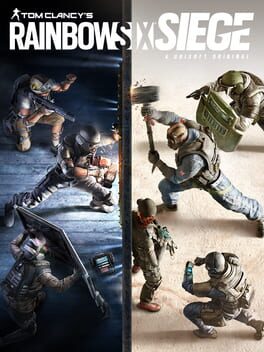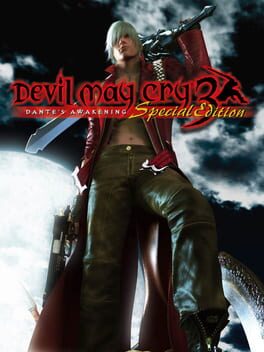Axlrowser
586 reviews liked by Axlrowser
Rain World: Downpour
2023
Some things you can never forgive, and such charity will never be given to the taste makers that absolutely failed Rain World at release, so called professionals of the medium who were unable to engage with its singular vision and holistic design, to put it mildly. Time however has vindicated Rain World, now a work of cult following and ever increasing recognition and prestige within the most fervent supporters of emergent gameplay, transcending its pilgrims through one of the most affecting and affirming experiences of uncompromised talent and understanding of what videogames can and should be.
6 years later, Rain World's simulation of nature's beautiful cruelty remains an untouchable feat of game design that threads its hidden mechanics and systems with the erratic and unpredictable ecosystem of alien yet animalistic critters that instigate the player to subconsciously participate on a food chain of cause and effect, so seamlessly permeated through Slugcat's learning process of overcoming the odds and discovering where their limits lies.
Downpour represents purely an assertion of the undeniable qualities of the base game, filling it with abundant content that dares not touch the core tenets of Rain World but instead just adding on top new toys and rules with which to navigate its sandbox. Be it Gourmand and its insatiable gluttony or Artificer and its pyrotechnic killing spree, the careful balance of Rain World is never tarnished or dilluted in favor of an experience that runs contrary to the cat and mouse art it excels at.
I will save the remaining Slugcats for a later time. Rain World is a once in a lifetime deal that I wish to forget for a while until the day I once again need to be reminded of its beautifully realized environment of industrial decay and out of control flora and fauna that puts to shame much of Metroid's milestones and whose crushing Rain instils in me a humble reverance for its deafening cleansing brutality, listening to it from the safety of a newly found shelter in the nick of time in the same manner I would listen to the rain outside my room from the comfort of my cozy bed.
6 years later, Rain World's simulation of nature's beautiful cruelty remains an untouchable feat of game design that threads its hidden mechanics and systems with the erratic and unpredictable ecosystem of alien yet animalistic critters that instigate the player to subconsciously participate on a food chain of cause and effect, so seamlessly permeated through Slugcat's learning process of overcoming the odds and discovering where their limits lies.
Downpour represents purely an assertion of the undeniable qualities of the base game, filling it with abundant content that dares not touch the core tenets of Rain World but instead just adding on top new toys and rules with which to navigate its sandbox. Be it Gourmand and its insatiable gluttony or Artificer and its pyrotechnic killing spree, the careful balance of Rain World is never tarnished or dilluted in favor of an experience that runs contrary to the cat and mouse art it excels at.
I will save the remaining Slugcats for a later time. Rain World is a once in a lifetime deal that I wish to forget for a while until the day I once again need to be reminded of its beautifully realized environment of industrial decay and out of control flora and fauna that puts to shame much of Metroid's milestones and whose crushing Rain instils in me a humble reverance for its deafening cleansing brutality, listening to it from the safety of a newly found shelter in the nick of time in the same manner I would listen to the rain outside my room from the comfort of my cozy bed.
'Rui, do people’s hearts forget how to react to a town that leaves nothing behind to remember it by? In comparison, there is something cruel, merciless about the sight of the Sanriku region, where everyday life was transformed into ruins. For that mountain of debris was the “hope” people had spent years building.'
– Kyōko Hayashi, Futatabi Rui e, 2013 (tr. Margaret Mitsutani).
Kyōko Hayashi's works attempt to convey to younger generations the lived experience of the hibakusha, the direct survivors of the atomic bombings of Hiroshima and Nagasaki. A particular feature of her work is the blending of temporalities and events, which illustrates her chaotic and almost unspeakable recollection of the events of the 9 August 1945. In Futatabi Rui e (2013), Hayashi writes a new letter to Rui – following the one included in Torinitii kara torinitii e (2000) – meditating on the effects of the Great East Japan Earthquake and the Fukushima disaster. She writes: 'perhaps the Great East Japan Earthquake was what turned this destruction in the natural world I thought was eternal into a sign that everything I’d believed in was now crumbling before my eyes' [1].
Disasters and environmentalism in Japanese fiction
The atomic bombings and the Fukushima disaster have had a lasting impact on Japanese cultural production, like a never-ending ghost that is periodically fanned by current events. Fumiyo Kōno's Yunagi no machi, sakura no kuni (2003) illustrates this concern in a multi-generational story. It is a cathartic narrative whose main purpose is to nurture and reconcile the painful memory for the hibakusha, but also for those who did not directly witness the events. The acceleration of climate change and Japan's new energy mix are also of growing concern, conjuring up an image of a Japan on the brink of extinction and ravaged by disasters. Two examples illustrate the epidermal nature of these issues. In 2014, the famous gourmet manga Oishinbo (1983) tackled the aftermath of the Fukushima disaster head-on, highlighting the harmful effects on the environment and the people of the region, who suffered regular nosebleeds. These scenes clashed with the official discourse on the effects of the accident, so much so that Shinzo Abe directly condemned the manga [2], leading to the series' ongoing hiatus.
More recently, Makoto Shinkai's films have oscillated between neo-traditionalism and social conservatism, as in Tenki no Ko (2019). Maria Mihaela Grajdian has already pointed out that Mamoru Hosoda's films, by idealising concepts such as family, parenthood and masculinity, 'shows both that he understands the critical situation and that he does not regard it as his duty to offer alternative solutions, more in tune with the spirit of the 21st century' [3]. In Tenki no Ko, Shinkai is content with the same naive, depoliticising position: climate change and the disappearance of Japan under the sea are seen as inevitable natural phenomena, and the film prefers to focus on the fleeting happiness of a few teenagers from a purely individualistic, conservative perspective.
With The Legend of Zelda: Breath of the Wild (2017), Nintendo's flagship series has also taken up these themes anew. This is less a first exploration than an updated discourse. The Zelda games have always contained elements of shintō philosophy, contrasting Arthurian mythology with the typically Japanese depiction of environments, whether through non-human creatures, the abundance of islands – literal or figurative – or the sacred aspect of nature. Breath of the Wild depicted the world after a catastrophe and the restoration of nature, everlasting despite the scars left by disasters. Tears of the Kingdom is a direct reflection of this vision, by reversing the representation.
Flowers of ruin: looking at micro-gardens
A variation on the theme of Majora's Mask (2000), Tears of the Kingdom also shows humanity on the brink of extinction. However, the tone is quite different. Whereas Majora's Mask was a journey into nihilism and the lack of communication that breaks down interpersonal relationships, Tears of the Kingdom explores the persistence of solidarity and the opening up of societies. Recontextualised, the world of Hyrule is a fable that sings of the resilience of nations in the face of natural disaster. Even within the first few hours of surface exploration, the world is teeming with life, yet societies live hidden away, sheltered from the elements. There is something charming about re-exploring a world that is decidedly optimistic, but still a little fearful, like the first buds of spring breaking through the snow.
Rather tellingly, the Zonai Ruins are still harbouring life: the sky islands are still inhabited by birds, while the debris that has fallen to the ground is home to plants that normally only grow in the heavens. Despite these chaotic elements, however, the world of Hyrule is somewhat more domesticated. The roads are well trodden by travellers, stables provide regular resting places, and construction materials are plentiful along the roadsides. Tears of the Kingdom has swapped the 'miniature plant garden' and 'garden in a box' (hakoniwa) [4] for a lusher shrubland. Hyrule is shaped by the collaborative work of its inhabitants, and their presence can be seen in the little accents that dot the landscape: Zelda and Magda's little flower garden, or Pyper's glittering tree, are clear signs that humans have made the environment their own, creating a symbiotic relationship between society and nature.
Tears of the Kingdom is, in a way, an ode to primordialism and man's passivity when it comes to influencing nature. Unlike Breath of the Wild, where the equipment forged by humans quickly becomes the most powerful, the player can make do with items found on monsters for most of the adventure. It's not until fairly late in the game that the shift occurs, when Zonai items can become more valuable. More generally, Tears of the Kingdom allows the player to contemplate the world and its inhabitants through tighter resource management, at least in the first few dozen hours. But even when Link is well equipped, nature is not easily tamed, as the introduction of world bosses keeps exploration somewhat terrifying or majestic. The exploration of the Depths, while often undermined by visual monotony, illustrates the sinister nature of what crawls beneath the gaze of the living, and the importance of ruin, not just of human civilisations, but of a world tainted by corruption (kegare).
A melancholic sky: fall and burden as elements of game design
This aesthetic owes a great deal to the vision of Hidemaro Fujibayashi and Daiki Iwamoto, given that they apprehend the sky through the act of falling. There is a certain tragic irony to this Upheaval, as it is used to discover the reasons for the fall of the Zonai. As in Skyward Sword (2011), the exploration of the skies begins with a long fall. But the world of Skyward Sword allows for much easier exploration thanks to its bird mounts [5], whereas in Tears of the Kingdom Link is constantly being pulled down by gravity. He is destined to fall, and this sense of heaviness is present throughout the game: in particular, the interactions with the various inhabitants of the world emphasise their insecurity and, by extension, their fallibility. Despite the humour and joviality that runs through the dialogue, all the characters are undermined by self-imposed desires and missions. Addison continues to hold signs for endless days, Reede is forced to admit that his vision of tranquillity is no longer sustainable, and Penn struggles with his fear of actively participating in field investigation. There is something deeply human about them, and Link emerges in turn as a mythologised figure as he performs heroic deeds and helps others. In this respect, it is striking that everyone knows his name, but his identity sometimes remains a mystery.
This philosophy no doubt helps to explain other design elements and Fujibayashi's characteristic wandering. Tears of the Kingdom opts for a more scripted progression, with the player openly encouraged to help the various tribes. Each storyline is fairly engaging and recontextualises nicely the characters met in Breath of the Wild – with the exception of the Goron quest, which neutralises its anti-capitalist themes far too quickly. The main quests in each region are refreshingly varied, with some unexpected sequences such as the defence of Gerudo Town. The downside of this approach is the disappointment of the dungeons. These are particularly mediocre, a simple series of puzzles inferior to those in the Shrines. The same structure as The Minish Cap (2004) is found in Tears of the Kingdom, with an inability to think holistically about design. These sequences do a poor job of incorporating the great freedom of Link's powers; it would probably have been more interesting to emphasise the oppressive aspect of confined spaces and a survival approach, for example by removing the map in dungeons.
As it stands, the non-linearity of the title works against many of the design ideas. In addition to the identical flashbacks for each Sage, the dungeons do not adapt well to the upscaling that players experience as they accumulate more resources and power. For the most part, the dungeons restrict the new skills unlocked, rather than showcasing them as other mini-dungeons and celestial islands can, where Ultrahand shines very brightly. The Fire Temple is perhaps the only exception, as it is possible to completely ignore the various puzzles if the player has enough resources and has been diligent in their exploration. On the other hand, the non-linearity works well with the side quests, as it feels genuinely satisfying when an NPC tells Link that he has already completed the mission he was given. Similarly, the Proving Grounds Shrines benefit greatly from player progression and a larger heart pool, turning a careful experience into a speed challenge, while the other Shrines allow for creative expression for players familiar with the advanced grammar of the various powers and machines.
Perhaps more importantly, it is the combat that suffers greatly from this approach: while Tears of the Kingdom features much larger waves of enemies, the system remains clunky. The combat system is designed for duels rather than large-scale melee, and the lack of ergonomics often renders Fuse unusable in battle. Similarly, the Sages' avatars are a welcome touch, emphasising the fact that Link is no longer alone, but the implementation is so unpleasant that it is easier to ignore their powers outside of certain puzzles. To a certain extent, the heaviness of the game and the idea of the fall serve to underline a contemplation of the world and its societies, provided one is receptive to Fujibayashi and Iwamoto's themes, but at the expense of the gameplay and the fluidity of the experience.
To live is to atone for one's sins: neo-traditionalism in Japan
Breath of the Wild had already begun to return to a very Japanese aesthetic, a trend that continues in Tears of the Kingdom. Certain elements are obvious: Kakariko Village retains the same visual appearance, and the soundtrack features many more Asian elements – 'Master Kohga Battle' makes more use of the shamisen, and the 'Main Theme' is largely driven by an erhu, to name just two examples. Thematically, the universe more readily embraces East Asian mythology. Dragons are explicitly Japanese, as are the quest for immortality, magatama, the constant search for home (ibasho), and the genealogical links between humanity and the gods – the royalty of Hyrule is descended from the union of Zonai and humans, just as Emperor Jimmu is described as a descendant of Amaterasu.
Strikingly, the noble female characters in Tears of the Kingdom are all marked by the Japanese stain of tragedy, whether through the burden of blood, motherhood or the sins for which they take responsibility. The thematic development and presentation of Rauru and Sonia form a striking parallel with Izanagi and Izanami. As parental figures, the royal couple represents a familial and affective ideal, albeit a highly traditional one. Despite its seemingly progressive themes, Tears of the Kingdom revels in social stagnation and a status quo that must be protected at all costs – the True Ending emphasises that the point was not just to defeat Ganondorf, but to preserve 'eternal peace' (eien no an'nei) [6]. Hyrule may have undergone a number of transformations since Breath of the Wild, but they have always occurred within continuities: clan leaders have changed, but only to be replaced by blood descendants. Similarly, the multicultural discourse is always tempered by the service that the different tribes provide to the Hylian royalty, according to a strict hierarchy.
Tears of the Kingdom is a parenthesis and a intermediary conclusion to the series. At the end of the adventure, Link returns the powers he used to explore the world. The gameplay of the title is designed to be a natural extension of the powers used in Breath of the Wild, increasing the creative and traversal possibilities. It is, however, a temporary experience; to the player, Tears of the Kingdom repeats the same old message: 'this is what I propose, and if you do not like it, so be it'. The title makes no concessions in its approach, to the point where it suffers structurally. Its extraordinary density may seem almost antiquated – but such has been Fujibayashi's legacy since The Minish Cap – and some will find the idea of the game providing bits and pieces of the solution to every puzzle heavy-handed.
Hyrule is still scarred by the damage of the Upheaval; there is no sign of the islands falling to the ground again, nor does Hyrule Castle. The Chasms are unlikely to close either, with only the Gloom gone. Mankind will have to learn to live with this new and distorted world. Like Japanese disaster fiction, Tears of the Kingdom looks to the future – to the resilience of the people – but it also reflects on the trauma that will not fade away: Kyōko Hayashi laments the inaction of institutions while the traces of destruction are still present in Japan, and the promise of the Sages at the very end of the game seems to be a response to this concern. Tears of the Kingdom guides the player's gaze almost relentlessly towards a contemplation of Japanese society in its environment, even if it means verging on the artificial, and whether or not this approach is welcomed is up to the player.
__________
[1] Kyōko Hayashi, 'To Rui, Once Again', tr. Margaret Mitsutani, in The Asia-Pacific Journal, vol. 15-7, no. 3, 2017, p. 3.
[2] Justin McCurry, 'Gourmet manga stirs up storm after linking Fukushima to nosebleeds', in The Guardian, 22nd May 2014, consulted on 10th July 2023.
[3] Maria Mihaela Grajdian, 'Compassionate Neo-Traditionalism in Hosoda Mamoru’s Animation Movies', in Russian Japanology Review, vol. 3, no. 2, 2020, p. 148.
[4] Victor Moisan, Zelda : Le jardin et le monde, Façonnage, Lyon, 2021.
[5] On spatiality, the traversal aspect and the design of the sky and Skyloft, see 'Volume Five: The Dense Sky and Town', in Nintendo, Iwata Asks – The Legend of Zelda: Skyward Sword, 2011.
[6] Note that the English translation conveys the original idea slightly differently, balancing Ganondorf's defeat with the idea of 'eternal peace'. The Japanese text reads: 「あの方たちが願ったのはつかまあ束の間ではなく永遠に続くハイラルの安寧。」Here, the comparison is much more focused on the ephemeral and the eternal, while the term 安寧 expresses both Hyrule's public peace and Zelda's inner tranquillity.
– Kyōko Hayashi, Futatabi Rui e, 2013 (tr. Margaret Mitsutani).
Kyōko Hayashi's works attempt to convey to younger generations the lived experience of the hibakusha, the direct survivors of the atomic bombings of Hiroshima and Nagasaki. A particular feature of her work is the blending of temporalities and events, which illustrates her chaotic and almost unspeakable recollection of the events of the 9 August 1945. In Futatabi Rui e (2013), Hayashi writes a new letter to Rui – following the one included in Torinitii kara torinitii e (2000) – meditating on the effects of the Great East Japan Earthquake and the Fukushima disaster. She writes: 'perhaps the Great East Japan Earthquake was what turned this destruction in the natural world I thought was eternal into a sign that everything I’d believed in was now crumbling before my eyes' [1].
Disasters and environmentalism in Japanese fiction
The atomic bombings and the Fukushima disaster have had a lasting impact on Japanese cultural production, like a never-ending ghost that is periodically fanned by current events. Fumiyo Kōno's Yunagi no machi, sakura no kuni (2003) illustrates this concern in a multi-generational story. It is a cathartic narrative whose main purpose is to nurture and reconcile the painful memory for the hibakusha, but also for those who did not directly witness the events. The acceleration of climate change and Japan's new energy mix are also of growing concern, conjuring up an image of a Japan on the brink of extinction and ravaged by disasters. Two examples illustrate the epidermal nature of these issues. In 2014, the famous gourmet manga Oishinbo (1983) tackled the aftermath of the Fukushima disaster head-on, highlighting the harmful effects on the environment and the people of the region, who suffered regular nosebleeds. These scenes clashed with the official discourse on the effects of the accident, so much so that Shinzo Abe directly condemned the manga [2], leading to the series' ongoing hiatus.
More recently, Makoto Shinkai's films have oscillated between neo-traditionalism and social conservatism, as in Tenki no Ko (2019). Maria Mihaela Grajdian has already pointed out that Mamoru Hosoda's films, by idealising concepts such as family, parenthood and masculinity, 'shows both that he understands the critical situation and that he does not regard it as his duty to offer alternative solutions, more in tune with the spirit of the 21st century' [3]. In Tenki no Ko, Shinkai is content with the same naive, depoliticising position: climate change and the disappearance of Japan under the sea are seen as inevitable natural phenomena, and the film prefers to focus on the fleeting happiness of a few teenagers from a purely individualistic, conservative perspective.
With The Legend of Zelda: Breath of the Wild (2017), Nintendo's flagship series has also taken up these themes anew. This is less a first exploration than an updated discourse. The Zelda games have always contained elements of shintō philosophy, contrasting Arthurian mythology with the typically Japanese depiction of environments, whether through non-human creatures, the abundance of islands – literal or figurative – or the sacred aspect of nature. Breath of the Wild depicted the world after a catastrophe and the restoration of nature, everlasting despite the scars left by disasters. Tears of the Kingdom is a direct reflection of this vision, by reversing the representation.
Flowers of ruin: looking at micro-gardens
A variation on the theme of Majora's Mask (2000), Tears of the Kingdom also shows humanity on the brink of extinction. However, the tone is quite different. Whereas Majora's Mask was a journey into nihilism and the lack of communication that breaks down interpersonal relationships, Tears of the Kingdom explores the persistence of solidarity and the opening up of societies. Recontextualised, the world of Hyrule is a fable that sings of the resilience of nations in the face of natural disaster. Even within the first few hours of surface exploration, the world is teeming with life, yet societies live hidden away, sheltered from the elements. There is something charming about re-exploring a world that is decidedly optimistic, but still a little fearful, like the first buds of spring breaking through the snow.
Rather tellingly, the Zonai Ruins are still harbouring life: the sky islands are still inhabited by birds, while the debris that has fallen to the ground is home to plants that normally only grow in the heavens. Despite these chaotic elements, however, the world of Hyrule is somewhat more domesticated. The roads are well trodden by travellers, stables provide regular resting places, and construction materials are plentiful along the roadsides. Tears of the Kingdom has swapped the 'miniature plant garden' and 'garden in a box' (hakoniwa) [4] for a lusher shrubland. Hyrule is shaped by the collaborative work of its inhabitants, and their presence can be seen in the little accents that dot the landscape: Zelda and Magda's little flower garden, or Pyper's glittering tree, are clear signs that humans have made the environment their own, creating a symbiotic relationship between society and nature.
Tears of the Kingdom is, in a way, an ode to primordialism and man's passivity when it comes to influencing nature. Unlike Breath of the Wild, where the equipment forged by humans quickly becomes the most powerful, the player can make do with items found on monsters for most of the adventure. It's not until fairly late in the game that the shift occurs, when Zonai items can become more valuable. More generally, Tears of the Kingdom allows the player to contemplate the world and its inhabitants through tighter resource management, at least in the first few dozen hours. But even when Link is well equipped, nature is not easily tamed, as the introduction of world bosses keeps exploration somewhat terrifying or majestic. The exploration of the Depths, while often undermined by visual monotony, illustrates the sinister nature of what crawls beneath the gaze of the living, and the importance of ruin, not just of human civilisations, but of a world tainted by corruption (kegare).
A melancholic sky: fall and burden as elements of game design
This aesthetic owes a great deal to the vision of Hidemaro Fujibayashi and Daiki Iwamoto, given that they apprehend the sky through the act of falling. There is a certain tragic irony to this Upheaval, as it is used to discover the reasons for the fall of the Zonai. As in Skyward Sword (2011), the exploration of the skies begins with a long fall. But the world of Skyward Sword allows for much easier exploration thanks to its bird mounts [5], whereas in Tears of the Kingdom Link is constantly being pulled down by gravity. He is destined to fall, and this sense of heaviness is present throughout the game: in particular, the interactions with the various inhabitants of the world emphasise their insecurity and, by extension, their fallibility. Despite the humour and joviality that runs through the dialogue, all the characters are undermined by self-imposed desires and missions. Addison continues to hold signs for endless days, Reede is forced to admit that his vision of tranquillity is no longer sustainable, and Penn struggles with his fear of actively participating in field investigation. There is something deeply human about them, and Link emerges in turn as a mythologised figure as he performs heroic deeds and helps others. In this respect, it is striking that everyone knows his name, but his identity sometimes remains a mystery.
This philosophy no doubt helps to explain other design elements and Fujibayashi's characteristic wandering. Tears of the Kingdom opts for a more scripted progression, with the player openly encouraged to help the various tribes. Each storyline is fairly engaging and recontextualises nicely the characters met in Breath of the Wild – with the exception of the Goron quest, which neutralises its anti-capitalist themes far too quickly. The main quests in each region are refreshingly varied, with some unexpected sequences such as the defence of Gerudo Town. The downside of this approach is the disappointment of the dungeons. These are particularly mediocre, a simple series of puzzles inferior to those in the Shrines. The same structure as The Minish Cap (2004) is found in Tears of the Kingdom, with an inability to think holistically about design. These sequences do a poor job of incorporating the great freedom of Link's powers; it would probably have been more interesting to emphasise the oppressive aspect of confined spaces and a survival approach, for example by removing the map in dungeons.
As it stands, the non-linearity of the title works against many of the design ideas. In addition to the identical flashbacks for each Sage, the dungeons do not adapt well to the upscaling that players experience as they accumulate more resources and power. For the most part, the dungeons restrict the new skills unlocked, rather than showcasing them as other mini-dungeons and celestial islands can, where Ultrahand shines very brightly. The Fire Temple is perhaps the only exception, as it is possible to completely ignore the various puzzles if the player has enough resources and has been diligent in their exploration. On the other hand, the non-linearity works well with the side quests, as it feels genuinely satisfying when an NPC tells Link that he has already completed the mission he was given. Similarly, the Proving Grounds Shrines benefit greatly from player progression and a larger heart pool, turning a careful experience into a speed challenge, while the other Shrines allow for creative expression for players familiar with the advanced grammar of the various powers and machines.
Perhaps more importantly, it is the combat that suffers greatly from this approach: while Tears of the Kingdom features much larger waves of enemies, the system remains clunky. The combat system is designed for duels rather than large-scale melee, and the lack of ergonomics often renders Fuse unusable in battle. Similarly, the Sages' avatars are a welcome touch, emphasising the fact that Link is no longer alone, but the implementation is so unpleasant that it is easier to ignore their powers outside of certain puzzles. To a certain extent, the heaviness of the game and the idea of the fall serve to underline a contemplation of the world and its societies, provided one is receptive to Fujibayashi and Iwamoto's themes, but at the expense of the gameplay and the fluidity of the experience.
To live is to atone for one's sins: neo-traditionalism in Japan
Breath of the Wild had already begun to return to a very Japanese aesthetic, a trend that continues in Tears of the Kingdom. Certain elements are obvious: Kakariko Village retains the same visual appearance, and the soundtrack features many more Asian elements – 'Master Kohga Battle' makes more use of the shamisen, and the 'Main Theme' is largely driven by an erhu, to name just two examples. Thematically, the universe more readily embraces East Asian mythology. Dragons are explicitly Japanese, as are the quest for immortality, magatama, the constant search for home (ibasho), and the genealogical links between humanity and the gods – the royalty of Hyrule is descended from the union of Zonai and humans, just as Emperor Jimmu is described as a descendant of Amaterasu.
Strikingly, the noble female characters in Tears of the Kingdom are all marked by the Japanese stain of tragedy, whether through the burden of blood, motherhood or the sins for which they take responsibility. The thematic development and presentation of Rauru and Sonia form a striking parallel with Izanagi and Izanami. As parental figures, the royal couple represents a familial and affective ideal, albeit a highly traditional one. Despite its seemingly progressive themes, Tears of the Kingdom revels in social stagnation and a status quo that must be protected at all costs – the True Ending emphasises that the point was not just to defeat Ganondorf, but to preserve 'eternal peace' (eien no an'nei) [6]. Hyrule may have undergone a number of transformations since Breath of the Wild, but they have always occurred within continuities: clan leaders have changed, but only to be replaced by blood descendants. Similarly, the multicultural discourse is always tempered by the service that the different tribes provide to the Hylian royalty, according to a strict hierarchy.
Tears of the Kingdom is a parenthesis and a intermediary conclusion to the series. At the end of the adventure, Link returns the powers he used to explore the world. The gameplay of the title is designed to be a natural extension of the powers used in Breath of the Wild, increasing the creative and traversal possibilities. It is, however, a temporary experience; to the player, Tears of the Kingdom repeats the same old message: 'this is what I propose, and if you do not like it, so be it'. The title makes no concessions in its approach, to the point where it suffers structurally. Its extraordinary density may seem almost antiquated – but such has been Fujibayashi's legacy since The Minish Cap – and some will find the idea of the game providing bits and pieces of the solution to every puzzle heavy-handed.
Hyrule is still scarred by the damage of the Upheaval; there is no sign of the islands falling to the ground again, nor does Hyrule Castle. The Chasms are unlikely to close either, with only the Gloom gone. Mankind will have to learn to live with this new and distorted world. Like Japanese disaster fiction, Tears of the Kingdom looks to the future – to the resilience of the people – but it also reflects on the trauma that will not fade away: Kyōko Hayashi laments the inaction of institutions while the traces of destruction are still present in Japan, and the promise of the Sages at the very end of the game seems to be a response to this concern. Tears of the Kingdom guides the player's gaze almost relentlessly towards a contemplation of Japanese society in its environment, even if it means verging on the artificial, and whether or not this approach is welcomed is up to the player.
__________
[1] Kyōko Hayashi, 'To Rui, Once Again', tr. Margaret Mitsutani, in The Asia-Pacific Journal, vol. 15-7, no. 3, 2017, p. 3.
[2] Justin McCurry, 'Gourmet manga stirs up storm after linking Fukushima to nosebleeds', in The Guardian, 22nd May 2014, consulted on 10th July 2023.
[3] Maria Mihaela Grajdian, 'Compassionate Neo-Traditionalism in Hosoda Mamoru’s Animation Movies', in Russian Japanology Review, vol. 3, no. 2, 2020, p. 148.
[4] Victor Moisan, Zelda : Le jardin et le monde, Façonnage, Lyon, 2021.
[5] On spatiality, the traversal aspect and the design of the sky and Skyloft, see 'Volume Five: The Dense Sky and Town', in Nintendo, Iwata Asks – The Legend of Zelda: Skyward Sword, 2011.
[6] Note that the English translation conveys the original idea slightly differently, balancing Ganondorf's defeat with the idea of 'eternal peace'. The Japanese text reads: 「あの方たちが願ったのはつかまあ束の間ではなく永遠に続くハイラルの安寧。」Here, the comparison is much more focused on the ephemeral and the eternal, while the term 安寧 expresses both Hyrule's public peace and Zelda's inner tranquillity.
Final Fantasy XVI
2023
I considered strongly putting together a long-form critique of this game, but the most damning statement I could possibly make about Final Fantasy XVI is that I truly don't think it's worth it. The ways in which I think this game is bad are not unique or interesting: it is bad in the same way the vast majority of these prestige Sony single-player exclusives are. Its failures are common, predictable, and depressingly endemic. It is bad because it hates women, it is bad because it treats it's subject matter with an aggressive lack of care or interest, it is bad because it's imagination is as narrow and constrained as it's level design. But more than anything else, it is bad because it only wants to be Good.
Oxymoronic a statement as it might appear, this is core to the game's failings to me. People who make games generally want to make good games, of course, but paired with that there is an intent, an interest, an idea that seeks to be communicated, that the eloquence with which it professes its aesthetic, thematic, or mechanical goals will produce the quality it seeks. Final Fantasy XVI may have such goals, but they are supplicant to its desire to be liked, and so, rather than plant a flag of its own, it stitches together one from fabric pillaged from the most immediate eikons of popularity and quality - A Song of Ice and Fire, God of War, Demon Slayer, Devil May Cry - desperately begging to be liked by cloaking itself in what many people already do, needing to be loved in the way those things are, without any of the work or vision of its influences, and without any charisma of its own. Much like the patch and DLC content for Final Fantasy XV, it's a reactionary and cloying work that contorts itself into a shape it thinks people will love, rather than finding a unique self to be.
From the aggressively self-serious tone that embraces wholeheartedly the aesthetics of Prestige Fantasy Television with all its fucks and shits and incest and Grim Darkness to let you know that This Isn't Your Daddy's Final Fantasy, without actually being anywhere near as genuinely Dark, sad, or depressing as something like XV, from combat that borrows the surface-level signifiers of Devil May Cry combat - stingers, devil bringers, enemy step - but without any actual opposition or reaction of that series' diverse and reactive enemy set and thoughtful level design, or the way there's a episode of television-worth of lectures from a character explaining troop movements and map markers that genuinely do not matter in any way in order to make you feel like you're experiencing a well thought-out and materially concerned political Serious Fantasy, Final Fantasy XVI is pure wafer-thin illusion; all the surface from it's myriad influences but none of the depth or nuance, a greatest hits album from a band with no voice to call their own, an algorithmically generated playlist of hits that tunelessly resound with nothing. It looks like Devil May Cry, but it isn't - Devil May Cry would ask more of you than dodging one attack at a time while you perform a particularly flashy MMO rotation. It looks like A Song of Ice and Fire, but it isn't - without Martin's careful historical eye and materialist concerns, the illusion that this comes even within striking distance of that flawed work shatters when you think about the setting for more than a moment.
In fairness, Final Fantasy XVI does bring more than just the surface level into its world: it also brings with it the nastiest and ugliest parts of those works into this one, replicated wholeheartedly as Aesthetic, bereft of whatever semblance of texture and critique may have once been there. Benedikta Harman might be the most disgustingly treated woman in a recent work of fiction, the seemingly uniform AAA Game misogyny of evil mothers and heroic, redeemable fathers is alive and well, 16's version of this now agonizingly tired cliche going farther even than games I've railed against for it in the past, which all culminates in a moment where three men tell the female lead to stay home while they go and fight (despite one of those men being a proven liability to himself and others when doing the same thing he is about to go and do again, while she is not), she immediately acquiesces, and dutifully remains in the proverbial kitchen. Something that thinks so little of women is self-evidently incapable of meaningfully tackling any real-world issue, something Final Fantasy XVI goes on to decisively prove, with its story of systemic evils defeated not with systemic criticism, but with Great, Powerful Men, a particularly tiresome kind of rugged bootstrap individualism that seeks to reduce real-world evils to shonen enemies for the Special Man with Special Powers to defeat on his lonesome. It's an attempt to discuss oppression and racism that would embarrass even the other shonen media it is clearly closer in spirit to than the dark fantasy political epic it wears the skin of. In a world where the power fantasy of the shonen superhero is sacrosanct over all other concerns, it leads to a conclusion as absurd and fundamentally unimaginative as shonen jump's weakest scripts: the only thing that can stop a Bad Guy with an Eikon is a Good Guy with an Eikon.
In borrowing the aesthetics of the dark fantasy - and Matsuno games - it seeks to emulate, but without the nuance, FF16 becomes a game where the perspective of the enslaved is almost completely absent (Clive's period as a slave might as well not have occurred for all it impacts his character), and the power of nobility is Good when it is wielded by Good Hands like Lord Rosfield, a slave owner who, despite owning the clearly abused character who serves as our introduction to the bearers, is eulogized completely uncritically by the script, until a final side quest has a character claim that he was planning to free the slaves all along...alongside a letter where Lord Rosfield discusses his desire to "put down the savages". I've never seen attempted slave owner apologia that didn't reveal its virulent underlying racism, and this is no exception. In fact, any time the game attempts to put on a facade of being about something other than The Shonen Hero battling other Kamen Riders for dominance, it crumbles nigh-immediately; when Final Fantasy 16 makes its overtures towards the Power of Friendship, it rings utterly false and hollow: Clive's friends are not his power. His power is his power.
The only part of the game that truly spoke to me was the widely-derided side-quests, which offer a peek into a more compelling story: the story of a man doing the work to build and maintain a community, contributing to both the material and emotional needs of a commune that attempts to exist outside the violence of society. As tedious as these sidequests are - and as agonizing as their pacing so often is - it's the only part of this game where it felt like I was engaging with an idea. But ultimately, even this is annihilated by the game's bootstrap nonsense - that being that the hideaway is funded and maintained by the wealthy and influential across the world, the direct beneficiaries and embodiments of the status quo funding what their involvement reveals to be an utterly illusionary attempt to escape it, rendering what could be an effective exploration of what building a new idea of a community practically looks like into something that could be good neighbors with Galt's Gulch.
In a series that is routinely deeply rewarding for me to consider, FF16 stands as perhaps its most shallow, underwritten, and vacuous entry in decades. All games are ultimately illusions, of course: we're all just moving data around spreadsheets, at the end of the day. But - as is the modern AAA mode de jour - 16 is the result of the careful subtraction of texture from the experience of a game, the removal of any potential frictions and frustrations, but further even than that, it is the removal of personality, of difference, it is the attempt to make make the smoothest, most likable affect possible to the widest number of people possible. And, just like with its AAA brethren, it has almost nothing to offer me. It is the affect of Devil May Cry without its texture, the affect of Game of Thrones without even its nuance, and the affect of Final Fantasy without its soul.
Final Fantasy XVI is ultimately a success. It sought out to be Good, in the way a PS5 game like this is Good, and succeeded. And in so doing, it closed off any possibility that it would ever reach me.
It doesn’t really surprise me that each positive sentiment I have seen on Final Fantasy XVI is followed by an exclamation of derision over the series’ recent past. Whether the point of betrayal and failure was in XV, or with XIII, or even as far back as VIII, the rhetorical move is well and truly that Final Fantasy has been Bad, and with XVI, it is good again. Unfortunately, as someone who thought Final Fantasy has Been Good, consistently, throughout essentially the entire span of it's existence, I find myself on the other side of this one.
Final Fantasy XV convinced me that I could still love video games when I thought, for a moment, that I might not. That it was still possible to make games on this scale that were idiosyncratic, personal, and deeply human, even in the awful place the video game industry is in.
Final Fantasy XVI convinced me that it isn't.
Oxymoronic a statement as it might appear, this is core to the game's failings to me. People who make games generally want to make good games, of course, but paired with that there is an intent, an interest, an idea that seeks to be communicated, that the eloquence with which it professes its aesthetic, thematic, or mechanical goals will produce the quality it seeks. Final Fantasy XVI may have such goals, but they are supplicant to its desire to be liked, and so, rather than plant a flag of its own, it stitches together one from fabric pillaged from the most immediate eikons of popularity and quality - A Song of Ice and Fire, God of War, Demon Slayer, Devil May Cry - desperately begging to be liked by cloaking itself in what many people already do, needing to be loved in the way those things are, without any of the work or vision of its influences, and without any charisma of its own. Much like the patch and DLC content for Final Fantasy XV, it's a reactionary and cloying work that contorts itself into a shape it thinks people will love, rather than finding a unique self to be.
From the aggressively self-serious tone that embraces wholeheartedly the aesthetics of Prestige Fantasy Television with all its fucks and shits and incest and Grim Darkness to let you know that This Isn't Your Daddy's Final Fantasy, without actually being anywhere near as genuinely Dark, sad, or depressing as something like XV, from combat that borrows the surface-level signifiers of Devil May Cry combat - stingers, devil bringers, enemy step - but without any actual opposition or reaction of that series' diverse and reactive enemy set and thoughtful level design, or the way there's a episode of television-worth of lectures from a character explaining troop movements and map markers that genuinely do not matter in any way in order to make you feel like you're experiencing a well thought-out and materially concerned political Serious Fantasy, Final Fantasy XVI is pure wafer-thin illusion; all the surface from it's myriad influences but none of the depth or nuance, a greatest hits album from a band with no voice to call their own, an algorithmically generated playlist of hits that tunelessly resound with nothing. It looks like Devil May Cry, but it isn't - Devil May Cry would ask more of you than dodging one attack at a time while you perform a particularly flashy MMO rotation. It looks like A Song of Ice and Fire, but it isn't - without Martin's careful historical eye and materialist concerns, the illusion that this comes even within striking distance of that flawed work shatters when you think about the setting for more than a moment.
In fairness, Final Fantasy XVI does bring more than just the surface level into its world: it also brings with it the nastiest and ugliest parts of those works into this one, replicated wholeheartedly as Aesthetic, bereft of whatever semblance of texture and critique may have once been there. Benedikta Harman might be the most disgustingly treated woman in a recent work of fiction, the seemingly uniform AAA Game misogyny of evil mothers and heroic, redeemable fathers is alive and well, 16's version of this now agonizingly tired cliche going farther even than games I've railed against for it in the past, which all culminates in a moment where three men tell the female lead to stay home while they go and fight (despite one of those men being a proven liability to himself and others when doing the same thing he is about to go and do again, while she is not), she immediately acquiesces, and dutifully remains in the proverbial kitchen. Something that thinks so little of women is self-evidently incapable of meaningfully tackling any real-world issue, something Final Fantasy XVI goes on to decisively prove, with its story of systemic evils defeated not with systemic criticism, but with Great, Powerful Men, a particularly tiresome kind of rugged bootstrap individualism that seeks to reduce real-world evils to shonen enemies for the Special Man with Special Powers to defeat on his lonesome. It's an attempt to discuss oppression and racism that would embarrass even the other shonen media it is clearly closer in spirit to than the dark fantasy political epic it wears the skin of. In a world where the power fantasy of the shonen superhero is sacrosanct over all other concerns, it leads to a conclusion as absurd and fundamentally unimaginative as shonen jump's weakest scripts: the only thing that can stop a Bad Guy with an Eikon is a Good Guy with an Eikon.
In borrowing the aesthetics of the dark fantasy - and Matsuno games - it seeks to emulate, but without the nuance, FF16 becomes a game where the perspective of the enslaved is almost completely absent (Clive's period as a slave might as well not have occurred for all it impacts his character), and the power of nobility is Good when it is wielded by Good Hands like Lord Rosfield, a slave owner who, despite owning the clearly abused character who serves as our introduction to the bearers, is eulogized completely uncritically by the script, until a final side quest has a character claim that he was planning to free the slaves all along...alongside a letter where Lord Rosfield discusses his desire to "put down the savages". I've never seen attempted slave owner apologia that didn't reveal its virulent underlying racism, and this is no exception. In fact, any time the game attempts to put on a facade of being about something other than The Shonen Hero battling other Kamen Riders for dominance, it crumbles nigh-immediately; when Final Fantasy 16 makes its overtures towards the Power of Friendship, it rings utterly false and hollow: Clive's friends are not his power. His power is his power.
The only part of the game that truly spoke to me was the widely-derided side-quests, which offer a peek into a more compelling story: the story of a man doing the work to build and maintain a community, contributing to both the material and emotional needs of a commune that attempts to exist outside the violence of society. As tedious as these sidequests are - and as agonizing as their pacing so often is - it's the only part of this game where it felt like I was engaging with an idea. But ultimately, even this is annihilated by the game's bootstrap nonsense - that being that the hideaway is funded and maintained by the wealthy and influential across the world, the direct beneficiaries and embodiments of the status quo funding what their involvement reveals to be an utterly illusionary attempt to escape it, rendering what could be an effective exploration of what building a new idea of a community practically looks like into something that could be good neighbors with Galt's Gulch.
In a series that is routinely deeply rewarding for me to consider, FF16 stands as perhaps its most shallow, underwritten, and vacuous entry in decades. All games are ultimately illusions, of course: we're all just moving data around spreadsheets, at the end of the day. But - as is the modern AAA mode de jour - 16 is the result of the careful subtraction of texture from the experience of a game, the removal of any potential frictions and frustrations, but further even than that, it is the removal of personality, of difference, it is the attempt to make make the smoothest, most likable affect possible to the widest number of people possible. And, just like with its AAA brethren, it has almost nothing to offer me. It is the affect of Devil May Cry without its texture, the affect of Game of Thrones without even its nuance, and the affect of Final Fantasy without its soul.
Final Fantasy XVI is ultimately a success. It sought out to be Good, in the way a PS5 game like this is Good, and succeeded. And in so doing, it closed off any possibility that it would ever reach me.
It doesn’t really surprise me that each positive sentiment I have seen on Final Fantasy XVI is followed by an exclamation of derision over the series’ recent past. Whether the point of betrayal and failure was in XV, or with XIII, or even as far back as VIII, the rhetorical move is well and truly that Final Fantasy has been Bad, and with XVI, it is good again. Unfortunately, as someone who thought Final Fantasy has Been Good, consistently, throughout essentially the entire span of it's existence, I find myself on the other side of this one.
Final Fantasy XV convinced me that I could still love video games when I thought, for a moment, that I might not. That it was still possible to make games on this scale that were idiosyncratic, personal, and deeply human, even in the awful place the video game industry is in.
Final Fantasy XVI convinced me that it isn't.
Yeah it was okay. As an action game it's extremely well polished and delivers some prime Naughty Dog esque setpiece moments.
As a Spider-Man adaptation, it's kind of limp and a bit underwhelming. There are no genuine moments on par with the Raimi or Spiderverse movies, for example. It's so sanitised.
The whole game feels sanitised to an inch of its life. Its depiction of New York City, while lovely from a gameplay perspective, is utterly lacking in character. The entire Peter/Harry relationship feels lifted from a church pamphlet or something. There's just very spark behind any of the characters in this. They don't feel like real human beings or even operatic comic book characters. I saw a tiktok clowning Miles Morales regular street clothes in this game and it made me realise there is just little to no effort implemented to make these people feel like they live lives outside the game. It just makes the whole thing so hollow, which is disappointing considering how nice the looks and plays. Or maybe I'm just not the target demo for this. I don't know.
A really fun but ultimate hollow experience. 7/10.
As a Spider-Man adaptation, it's kind of limp and a bit underwhelming. There are no genuine moments on par with the Raimi or Spiderverse movies, for example. It's so sanitised.
The whole game feels sanitised to an inch of its life. Its depiction of New York City, while lovely from a gameplay perspective, is utterly lacking in character. The entire Peter/Harry relationship feels lifted from a church pamphlet or something. There's just very spark behind any of the characters in this. They don't feel like real human beings or even operatic comic book characters. I saw a tiktok clowning Miles Morales regular street clothes in this game and it made me realise there is just little to no effort implemented to make these people feel like they live lives outside the game. It just makes the whole thing so hollow, which is disappointing considering how nice the looks and plays. Or maybe I'm just not the target demo for this. I don't know.
A really fun but ultimate hollow experience. 7/10.
I used to be a lore guy.
I used to get so caught up in the specifics of details interlocking and having causal relationships to each other. Skyrim has none of that. Instead it has vibes. It's all vibes. When I was younger I tried to dig too deep and was resentful of what wasn't there. I'd kit it out with a billion mods and try to make it something it wasn't. Some games that could loosely be thrown in the same genre - New Vegas, Disco Elysium, Baldur's Gate, are novels with added dimension. Their art is text; the game around them is just their interface. In this realm, Skyrim cannot compare. But why would it? It's not literature, it's a virtual diorama. It's a gorgeous landscape accompanied by the beautiful soundtrack of Soule that, somehow, no matter the angle, is always serene and mystical.
I convinced myself I despised it, yet every few years I boot it up and go for a lovely little stroll around a familiar old countryside. There's a reason this has become such a totemic piece of culture.
I used to get so caught up in the specifics of details interlocking and having causal relationships to each other. Skyrim has none of that. Instead it has vibes. It's all vibes. When I was younger I tried to dig too deep and was resentful of what wasn't there. I'd kit it out with a billion mods and try to make it something it wasn't. Some games that could loosely be thrown in the same genre - New Vegas, Disco Elysium, Baldur's Gate, are novels with added dimension. Their art is text; the game around them is just their interface. In this realm, Skyrim cannot compare. But why would it? It's not literature, it's a virtual diorama. It's a gorgeous landscape accompanied by the beautiful soundtrack of Soule that, somehow, no matter the angle, is always serene and mystical.
I convinced myself I despised it, yet every few years I boot it up and go for a lovely little stroll around a familiar old countryside. There's a reason this has become such a totemic piece of culture.
God of War Ragnarök
2022
Much better than the first game but is still full of issues. Getting really tired of game makers treating its audience like morons (“Kratos you’re on fire!!” times 100), but with the amount of praise this game gets I guess most people are fine with that. Also way too goddamn long, so many stretches of the game are painfully stretched out to make the game superficially longer. The one-take gimmick is still awful. However the story is much improved over the first one’s trite-ness, and the voice acting is top notch from everyone. Combat is more varied (thankfully there aren’t as many boss re-skins), although a lot of traversal mechanics are painfully slow (I assume for hidden loading screens). The chapter with Atreus and Angrboda is far and away the best part of the game, so of course it’s the section that most gamers complained about the most lol. Overall the series continues to be massively overhyped, but I won’t deny I still had a decent time with this one.
This is… not very good. And it makes me incredibly sad. As a big fan of the first game, this game tragically made me even question if the first is as good as I remember. This is functionally the same exact game with a new story, but it did not click with me throughout my entire playthrough. I think I’m mostly just exhausted by today’s AAA game design, where every ultra expensive game feels so focus-grouped to death that every single move I make in the game feels pre-determined, making it feel like I’m just watching an interactive movie versus interacting with game mechanics. Most annoyingly, the audience playing this game gets treated like idiots by having their hands held every second of the way, and this is done with characters talking out loud to themselves and with on-screen button prompts that tell you how to perform certain actions you’ve already been performing the entire game.
The set-pieces are certainly well directed visually, but the actual gameplay makes me feel like I’m playing on autopilot. The combat feels ok, but is not deep enough to feel dynamic or interesting. Swinging mechanics are a highlight, but swinging around a world full of stock buildings and skyscrapers feels so lifeless. The missions often feel like chores, which is a common complaint about open world games in the gaming world, but for some reason this game gets a pass (according to its overwhelming positive reception). Boss fights are atrocious and all play the exact same way, which is a baffling decision.The story, while occasionally emotionally engaging, is so risk-averse and stale. The dual protagonist structure had potential, but Miles is just so much less interesting of a character than Peter (I seem to be in the minority of this), and it doesn’t help that he just feels like a minor supporting character in Peter’s story. Kraven is such an underwhelming villain that he just feels like a plot macguffin, which wouldn’t be a bad thing if he wasn’t such a constant presence in the first two acts of the story. (Spoilers) The final act with Harry+Venom is so rushed it really feels like the developers ran out of time making this game.
All of this to say, having a big budget and state of the art graphics just doesn’t cut it when the game mechanics and story are so shallow. I’m happy that people seem to be really enjoying this game, but I pretentiously wish that gamers had higher standards when it comes to how we interact with video games and how gameplay actually engages with the story. A game about Spider-Man shouldn’t feel so constricted and limited with its mechanics.
The set-pieces are certainly well directed visually, but the actual gameplay makes me feel like I’m playing on autopilot. The combat feels ok, but is not deep enough to feel dynamic or interesting. Swinging mechanics are a highlight, but swinging around a world full of stock buildings and skyscrapers feels so lifeless. The missions often feel like chores, which is a common complaint about open world games in the gaming world, but for some reason this game gets a pass (according to its overwhelming positive reception). Boss fights are atrocious and all play the exact same way, which is a baffling decision.The story, while occasionally emotionally engaging, is so risk-averse and stale. The dual protagonist structure had potential, but Miles is just so much less interesting of a character than Peter (I seem to be in the minority of this), and it doesn’t help that he just feels like a minor supporting character in Peter’s story. Kraven is such an underwhelming villain that he just feels like a plot macguffin, which wouldn’t be a bad thing if he wasn’t such a constant presence in the first two acts of the story. (Spoilers) The final act with Harry+Venom is so rushed it really feels like the developers ran out of time making this game.
All of this to say, having a big budget and state of the art graphics just doesn’t cut it when the game mechanics and story are so shallow. I’m happy that people seem to be really enjoying this game, but I pretentiously wish that gamers had higher standards when it comes to how we interact with video games and how gameplay actually engages with the story. A game about Spider-Man shouldn’t feel so constricted and limited with its mechanics.
Alan Wake II
2023
This review contains spoilers
Something that makes Alan Wake 2 so unsettling and upsetting is the characters’ constant denial of “reality”. Whether it’s Saga denying her child’s death or Alan denying his inner darkness, the characters repeatedly assert that no, everyone else is being brainwashed and I have the only grip on reality.
I feel like I personally relate to the struggles that they go through, as I am terrified that the “reality” I have constructed in my head is completely false, and that I am always misconstruing the intentions of everyone I interact with. I also have a resentment against people in my life that demand that my life has to be a certain way, that I am expected to conform to a path in life that is deemed “normal” by society. It makes me feel like I have no control over my life choices. Unfortunately, sometimes I wonder, maybe those people are right. Maybe I shouldn’t be allowed to make my own choices. Maybe I should just conform to what everyone else expects of me. And that terrifies me.
The highlight of the game for me is when Saga is trapped in her mind palace after she falls into the Dark Place. At first, the mind palace is a simple but neat concept for a video game to deliver exposition. But then at this point of the game the mind palace becomes actively hostile against Saga. It presents her evidence that she is incompetent, insane, and a horrible mother. Her own mind is weaponizing her own anxieties and insecurities to try and convince her that she is a terrible human being; that she is out of her mind (something I and many other people can relate to).
But Saga fights. She refuses to let others control her own narrative. She recognizes her flaws as what they simply are: flaws. They are what make us human. Obviously she can’t completely overcome her anxieties, but she can learn from her mistakes and become a better person. And best of all, that is her choice to make. It’s her life and she isn’t going to let anyone else determine her outcome. That is just pure catharsis for me.
The fact that this game can make me feel this way while also have me fist-pumping and screaming “HELL YES!!!” during the two big Old Gods of Asgard sections is a monumental achievement. Not only is this easily GOTY of 2023, it’s straight up one of the greatest games I’ve ever had the pleasure of playing.
I feel like I personally relate to the struggles that they go through, as I am terrified that the “reality” I have constructed in my head is completely false, and that I am always misconstruing the intentions of everyone I interact with. I also have a resentment against people in my life that demand that my life has to be a certain way, that I am expected to conform to a path in life that is deemed “normal” by society. It makes me feel like I have no control over my life choices. Unfortunately, sometimes I wonder, maybe those people are right. Maybe I shouldn’t be allowed to make my own choices. Maybe I should just conform to what everyone else expects of me. And that terrifies me.
The highlight of the game for me is when Saga is trapped in her mind palace after she falls into the Dark Place. At first, the mind palace is a simple but neat concept for a video game to deliver exposition. But then at this point of the game the mind palace becomes actively hostile against Saga. It presents her evidence that she is incompetent, insane, and a horrible mother. Her own mind is weaponizing her own anxieties and insecurities to try and convince her that she is a terrible human being; that she is out of her mind (something I and many other people can relate to).
But Saga fights. She refuses to let others control her own narrative. She recognizes her flaws as what they simply are: flaws. They are what make us human. Obviously she can’t completely overcome her anxieties, but she can learn from her mistakes and become a better person. And best of all, that is her choice to make. It’s her life and she isn’t going to let anyone else determine her outcome. That is just pure catharsis for me.
The fact that this game can make me feel this way while also have me fist-pumping and screaming “HELL YES!!!” during the two big Old Gods of Asgard sections is a monumental achievement. Not only is this easily GOTY of 2023, it’s straight up one of the greatest games I’ve ever had the pleasure of playing.
Ubisoft: Let’s make a game about Avatar (a movie franchise about colonialism and exploitation of the environment) where you have to strip Pandora of it’s natural resources and slaughter every animal you come across so that you can craft a muzzle attachment for your assault rifle that gives you a 2.3% chance on every fifth bullet you fire to poison an enemy.
Red Dead Redemption
2010
Cowboy man goes around the west meeting silly folk who only hinder his hunt for
his 3 evil ex-boyfriends
Anyways, game is fun to cowboy in. I think on my replay the story just isnt much strong untill the 3rd act where it starts to pick up more. Writing and acting can feel really basic and dry here and there. Some mechabics just felt weirdly tedious, like why if I wanna fast travel do i need to setup camp outside a town. Why cant i just go to the map and say "fast travel here". Instead i have to fast travel to specific towns or open my map and place a waypoint AND THEN set up camp to fast travel.
Its fun to play cowboy though and theres some fun weapons and tools you can use to just be silly and play cowboy with. John Marston is also a very cool cowboy man who just wants to see his family again. He can a little ruff but inside he may have a good heart? He is trying. I like riding horses so i can lasso people and drag them behind me like the maniac I am. What? Im sane partner.
game is a good time tho, with an easy 20 hours to beat
his 3 evil ex-boyfriends
Anyways, game is fun to cowboy in. I think on my replay the story just isnt much strong untill the 3rd act where it starts to pick up more. Writing and acting can feel really basic and dry here and there. Some mechabics just felt weirdly tedious, like why if I wanna fast travel do i need to setup camp outside a town. Why cant i just go to the map and say "fast travel here". Instead i have to fast travel to specific towns or open my map and place a waypoint AND THEN set up camp to fast travel.
Its fun to play cowboy though and theres some fun weapons and tools you can use to just be silly and play cowboy with. John Marston is also a very cool cowboy man who just wants to see his family again. He can a little ruff but inside he may have a good heart? He is trying. I like riding horses so i can lasso people and drag them behind me like the maniac I am. What? Im sane partner.
game is a good time tho, with an easy 20 hours to beat
